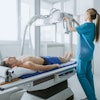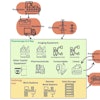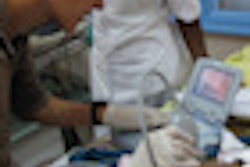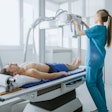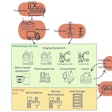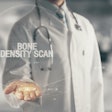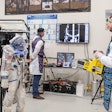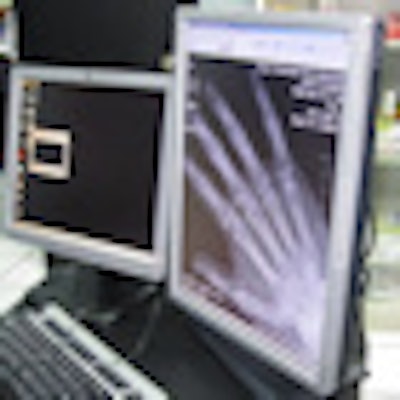
A nonprofit group formed to bring imaging to the developing world just completed a high-profile project, the installation of digital x-ray and teleradiology links in Guatemala. But the project also indicates the challenges facing the World Health Imaging, Telemedicine, and Informatics Alliance (WHITIA) as it tries to improve global access to imaging.
WHITIA was formed in 2009 to consolidate independent efforts to bring radiology equipment to developing countries. The group has focused on digital x-ray in particular, due to the modality's relatively low cost, simplicity, and ability to be integrated with teleradiology links.
WHITIA includes participation by imaging vendors, the philanthropy group Rotary International, and Northwestern University. In one of their first collaborations, the parties banded together to help a clinic in Guatemala install the country's first digital x-ray system in January, possibly leading to a countrywide network of such systems.
But the social venture concept behind WHITIA is itself a developing model, fraught with questions of timing, funding, delivery, training, international networks, and organizational interests. The successful digital x-ray installation at the Salud y Bienestar clinic in Guatemala City, then, is a parable of persistence.
Early origins
The project originated in 2007, when Rotary alerted WHITIA to the need for digital x-ray in Guatemala. John Vanden Brink, a Rotarian who helped found WHITIA, had experience coordinating the placement of WHIS-Rad (World Health Imaging System for Radiology) systems in nations such as Armenia and Zimbabwe since 1999.
 Rotary International representative John Vanden Brink at the unveiling of the new digital x-ray system. All images courtesy of Vanden Brink.
Rotary International representative John Vanden Brink at the unveiling of the new digital x-ray system. All images courtesy of Vanden Brink.
The Guatemala installation was completed in January 2011 and consists of a WHIS-Rad x-ray system (Sedecal) that is compliant with PAHO and World Health Organization (WHO) specifications. The digital component of the WHIS-Rad unit consists of a computed radiography (CR) system (Carestream Health) and PACS software (Merge Healthcare).
WHITIA also partnered with equipment servicing firm Kane X-Ray, whose personnel installed the CR and PACS. Funding for the installation came from six Rotary Clubs in northeastern Illinois and a Rotary District in Guatemala, with matching grants from the Rotary Foundation.
One early hiccup involved image transmission, as the x-ray equipment is located along with nutrition and psychiatric services in one of three separate buildings that comprise the clinic. The site where the equipment was installed initially didn't have Internet connectivity, which would have complicated efforts to set up a teleradiology link, but this issue was quickly resolved, according to Dr. Loida Navarro, the medical coordinator for the municipal clinics who oversaw the installation.
The system went into operation on February 1, and the clinic is currently examining about 20 patients per day, Navarro said. She added that there have been no major problems since the installation.
Keeping reads in-country
Having installed the equipment and trained the staff in the use of digital instead of conventional x-ray, new questions arose: Who would read the x-rays? And would they do it on a pro bono basis?
 Project organizers hope this digital x-ray system is just the first in what will become a nationwide network in Guatemala.
Project organizers hope this digital x-ray system is just the first in what will become a nationwide network in Guatemala.
"Who will read the x-rays is the decision of the Guatemalan Minister of Health," Vanden Brink said. "Taking that very important segment of a radiologist's work and taking it out of the country does not work. The issue was would it be pro bono? For one site it's not an issue, but you can't do it for multiple sites."
An additional rural x-ray installation in the town of Rio Hondo is receiving equipment and support from WHITIA, and a plan from the Guatemalan Minister of Health for digital x-ray systems to add to the network is imminent, according to Vanden Brink. This is part of a model WHITIA is developing whereby a pilot site tests feasibility before additional systems are placed, which then spreads the costs of maintenance across more sites.
Growing pains
As WHITIA's first project, the organization is closely tracking metrics of success, such as utilization of the system (donated WHIS-Rad systems have been warehoused indefinitely in some countries), quality of diagnostic images, and, most importantly, the ability for relationships created as part of the project to hold. "We had to forge a relationship with an in-country distributor in case the [WHIS-Rad] system goes down," said Ivy Walker, CEO of WHITIA.
Vanden Brink sees each of the parties involved in the Guatemala project -- industry, Rotary, and WHITIA -- as brining unique strengths. Rotary in particular has a major advantage in that its 32,000 clubs around the world provide points of contact that help elude the corruption and bribes that so often ensnare charitable equipment donations.
It's also clear that the various U.S. entities need each other: Walker noted that with the financial crisis in late 2008 "everything crashed; philanthropic giving dropped." With a financial infusion from Rotary, WHITIA now has a win under its belt.
Going forward, "the key thing is sustainability," Walker said. Vanden Brink agrees. "We just finished the agreement last month [with the Guatemalan Ministry of Health]. It's something that's going to last for a while," he said.
And all signs point to that sustainability being possible: Rotary has ongoing missions to Guatemala and is waiting for additional instructions from its healthcare community. Meanwhile, response to the digital x-ray system has been positive.
"We have to first thank God that there are people and organizations that are willing to help," said Navarro. "May God bless them so that they may continue to help more countries as well as us, because we do need it."
